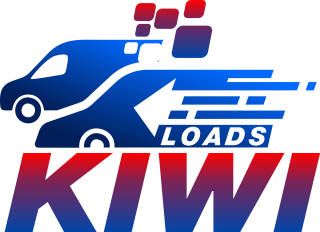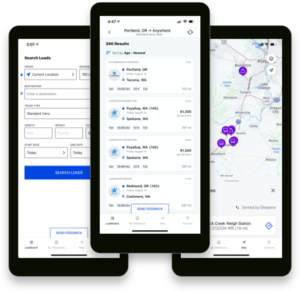Table of Contents
Introduction
Finding profitable loads is very important for your trucking business, impacting your income and cash flow. Key factors include load type, size, weight, destination, market demand, and costs. Tools like TruckingOffice or 123Loadboard’s calculators help determine your load profit.
To acquire profitable loads, you need to find freight rates using online tools like DAT or Truckstop. Utilize load boards (e.g., 123Loadboard or TruckersEdge) to find suitable loads. Connect with other brokers for access to a wide range of opportunities, but be cautious of fees and reputation.
Develop negotiation skills for securing favorable rates and terms. Optimize routes using tools like Google Maps or Trucker Path to enhance efficiency and reduce costs.
Understanding market rates, utilizing online platforms, negotiating effectively, and optimizing routes contribute to identifying and securing profitable loads in the trucking industry.
1. Research Freight Rates and Trends
2. Use Load Boards and Mobile Apps
3. Connect with Brokers and Shippers
4. Negotiate Prices and Terms
5. Optimize Routes and Expenses
Recap
1. Research Freight Rates and Trends
Researching freight rates and trends is essential for you to find profitable loads and optimize their operations.
Key advantages include:
Negotiating Power: Understand the average and range rates to help you with effective negotiation with brokers or shippers, improving your chances of securing better prices.
Market Targeting: Identifying high-demand and low-supply areas helps you focus on lucrative markets, avoiding oversaturated ones with lower rates and higher competition.
Strategic Planning: Anticipating seasonal and cyclical fluctuations allows you to become proactive in capacity and route adjustments, taking advantage of peak periods and avoiding slumps.
Sources and methods for research include:
Online Tools: Platforms like DAT or Method offer real-time and historical data on rates, market conditions, load availability, and carrier performance.
Industry Reports: Subscribing to newsletters and reports from sources like Freightos or UNCTAD provides insights into global freight industry developments, trends, and future forecasts.
Networking: Engaging with other drivers and carriers through forums, social media, associations, or events facilitates information exchange and builds relationships for you.
>>>MORE: Load Boards for Trucks
2. Use Load Boards and Mobile Apps
Load boards and mobile apps serve as online platforms connecting truck drivers and carriers with freight brokers and shippers. Here are the pros and cons:
Advantages
- Offer you access to a diverse range of loads, increasing opportunities and reducing deadhead miles.
- Give you filtering and sorting options for your unique load searches based on location, equipment, date, pay, and rating
- Provides additional features like rate calculators, route optimization, and load tracking to improve efficiency and profitability.
Disadvantages
- Allows competition with other drivers may drive down rates and weaken your bargaining power.
- Imposes potential fees, either monthly or per transaction, and can reduce your net income.
- Have the risk of outdated, inaccurate, or fraudulent information leading to you wasting time, money, or legal issues.
3. Connect with Brokers and Shippers
Connecting with brokers and shippers presents both advantages and challenges for you if you desire profitable loads.
Benefits
Building Relationships: Establishing trust with brokers and shippers can lead to more opportunities, referrals, and repeat business for you.
Access to Exclusive Loads: Brokers and shippers may offer you specialized, dedicated, or expedited loads that aren’t readily available on load boards.
Paying for Services: Despite potential fees, the expertise and network of brokers and shippers can help you find more profitable and convenient loads.
>>>PRO TIPS: Load Boards for Brokers
Challenges
Fees and Commissions: You may experience payment-related challenges which include fees, commissions, delayed payments, and potential disputes.
Competition: Competing with other drivers for the same loads may impact the rates and terms.
Information Reliability: Dealing with outdated, inaccurate, or fraudulent information about loads can waste your time, and money, or lead to legal issues.
4. Negotiate Prices and Terms
Negotiating prices and terms helps you when you aim to find profitable loads and foster business growth.
Benefits
Maximizing Profit Margin: Negotiating higher rates or lower costs increases the profit margin, resulting in improved income and cash flow.
Minimizing Risks: Negotiating load conditions reduces potential risks and liabilities, such as specifying pickup and delivery times, fees, insurance, and dispute resolution.
Ensuring Satisfaction and Value: Tailoring prices and terms to match expectations fosters satisfaction, builds trust, and enhances the likelihood of repeat business.
Factors and Techniques
Know Break-even Point and Target Rate: Understand your break-even point and target rate to provide reference points for evaluating and comparing different offers.
Research Market and Competition: Use tools like DAT or Method to research market rates, historical data, and competition for a clear understanding of supply and demand.
Use Leverage and Persuasion: Leverage advantages such as specialized equipment or a good reputation. Utilize persuasion techniques involving facts, logic, emotions, or incentives to reach mutually beneficial agreements.
5. Optimize Routes and Expenses
Optimizing routes and managing expenses entails you as a truck driver or carrier looking to enhance performance and profitability.
Impact and Benefits
Reducing Fuel Consumption and Wear and Tear
Example: Choose optimal routes to minimize fuel usage and decrease wear and tear on the truck and trailer, leading to lower operating costs and increased equipment lifespan.
Saving Time and Money
Example: Avoid traffic, tolls, and delays enabling time and cost savings, allowing for increased deliveries, and boosting revenue and cash flow.
Increasing Efficiency and Productivity
Example: Make use of efficient route planning to enhance your overall productivity, customer satisfaction, and retention–ensuring timely, safe, and reliable deliveries.
>>>GET SMARTER: Truckingoffice vs Axon Trucking Software
Tools and Methods
GPS and Navigation Systems
Example: Use systems like Google Maps or Trucker Path for optimal route planning, considering factors such as distance, traffic, weather, tolls, and permits.
Planning Ahead and Avoiding Traffic/Tolls
Example: Employ strategic planning based on historical and road data predictions, and access reliable data through tools like FreightWaves Ratings or Truckstop.
Tracking and Managing Income and Expenses
Example: Employ tools like TruckingOffice or KeepTruckin to monitor mileage, fuel, maintenance, repairs, insurance, and taxes, and generate necessary financial records.
Recap
Identifying a lucrative load is crucial for you as a truck driver and carrier in the competitive trucking industry. A profitable load generates more revenue than expenses, requiring consideration of factors like load type, size, and market dynamics. Employing tools such as researching freight rates, using load boards, and connecting with brokers helps you spot profitable opportunities.
Enjoying benefits like increased efficiency, minimized risks, and enhanced satisfaction, successful load spotting contributes to business growth. Additional resources like DAT’s guide, Method’s trucking rates report, and FreightWaves Ratings’ tips offer valuable insights for optimizing load selection and maximizing profits. Implementing these strategies empowers trucking businesses for success.



















